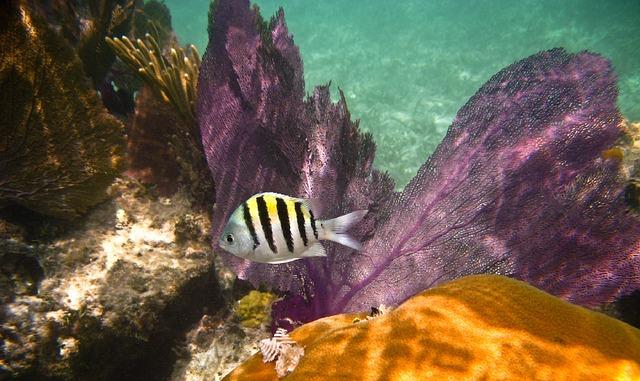
A Florida coral reef/Pixabay.
Dive beneath the surface in the lower Florida Keys, and swimmers once found themselves hovering above vibrant, coral communities. However, the past three decades have revealed a devastating loss of reef life around the globe. In the Looe Key Sanctuary Preservation Area alone, living coral cover plunged from 33 percent in 1984 to less than 6 percent 24 years later. But why?
For a long time, scientists have known that such rapid die-offs are a result of coral bleaching, a consequence of rapidly warming oceans. When temperatures rise beyond the limits of the coral – which are living organisms – they expel the symbiotic algae within their very bodies. The loss of the algae turns them bone-white, and can cause vast mortality events.
And yet, long-term data and monitoring from the Florida Keys shows humans are adding another stressor to the coral reef ecosystem: nitrogen.
Nitrogen flows into the Gulf of Mexico and the Atlantic Ocean from our sewer systems, our fertilizer, and our stormwater. As nitrogen levels rise in the water around the corals, they need more phosphorus to remain healthy. If and when phosphorus starvation kicks in, the corals become even more sensitive to rising temperatures. The increased nitrogen levels and warming waters are a one-two punch pushing some of the most diverse habitats in the world towards extinction.
The nitrogen revelation explains why coral bleaching occurred long before ocean temperatures reached their hottest levels in recent years. In the mid-1980s and mid-1990s, heavy rainfall deluged South Florida, and large influxes of nitrogen-laden water flowed from the Everglades into the ocean. Even though the water flows stemming from the Everglades have decreased, water quality has never returned to the nitrogen levels of the 1980s. Unfortunately, nitrogen along the coasts is expected to continue to increase across the world.
There is a silver lining. “We can do something about the nitrogen problem,” says Dr. Brian Lapointe, senior author of the paper on nitrogen and a researcher at FAU’s Harbor Branch. He lists “better sewage treatment, reducing fertilizer inputs, and increasing storage and treatment of stormwater on the Florida mainland” as options to protect the remaining coral reefs now and into the future.
Success stories do exist. In the Caribbean, corals have already begun to recover in the Bonaire region after a new sewage treatment plant opened in 2011, reducing the amount of nitrogen reaching coastal waters. Now it’s up the United States to follow their lead.



Add comment